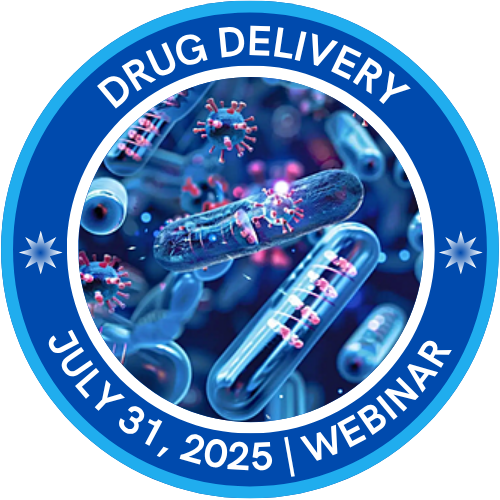Welcome to the Webinar on Pharmaceutical Sciences and Drug Delivery, which is scheduled to take place on August 26, 2025, in a virtual format. It is an honor to host a distinguished gathering of researchers, healthcare professionals, industry leaders, and scholars who share a deep commitment to advancing pharmaceutical innovations and drug delivery systems. This webinar provides a valuable platform to explore the latest breakthroughs, emerging technologies, and practical applications that are shaping the future of therapeutics. We encourage all participants to actively engage, ask questions, and take full advantage of this unique opportunity to learn, network, and contribute to the evolution of pharmaceutical science.
Pharmaceutical Sciences and Drug Delivery play a critical role in advancing global healthcare, focusing on the discovery, development, formulation, and administration of therapeutic agents that enhance patient outcomes. This dynamic field bridges the gap between laboratory research and clinical application, ensuring that medications are not only effective but also safe, accessible, and patient-friendly. From initial drug design to final dosage form, pharmaceutical sciences encompass a broad range of disciplines including medicinal chemistry, pharmacology, pharmaceutics, pharmacokinetics, and regulatory science. Drug delivery, a pivotal branch within this field, involves innovative strategies to transport therapeutic compounds to specific targets in the body, optimizing efficacy while minimizing side effects. A comprehensive approach to pharmaceutical sciences and drug delivery includes the development of novel dosage forms such as controlled-release tablets, transdermal systems, inhalable drugs, and nanocarrier-based formulations. These advancements are especially crucial in treating chronic conditions like cancer, diabetes, cardiovascular diseases, and neurological disorders, where precision and sustained release can dramatically improve therapeutic outcomes.

The global pharmaceutical sciences and drug delivery market is projected to grow significantly from 2024 to 2035, fueled by technological advancements, rising prevalence of chronic diseases, and the demand for more effective and patient-friendly drug administration systems. In 2024, the market is valued at approximately USD 1.97 trillion and is expected to reach around USD 3.18 trillion by 2034, with a compound annual growth rate (CAGR) of 4.90%. The drug formulation market alone is projected to grow from USD 1.6 trillion in 2024 to USD 2.8 trillion by 2035, at a CAGR of 5.7%, driven by the increasing adoption of advanced oral formulations. The drug delivery technology market, valued at USD 47.8 billion in 2024, is expected to rise to USD 136.7 billion by 2035, growing at a CAGR of 10.1%. Controlled release drug delivery systems are also gaining momentum, with the segment projected to grow from USD 61.28 billion in 2024 to USD 187.86 billion by 2035, at a CAGR of 10.72%, owing to their ability to enhance drug efficacy and patient adherence. Targeted drug delivery devices are anticipated to expand from USD 427 million in 2026 to USD 2.153 billion by 2035, reflecting a CAGR of 19.7%, driven by the growing need for precision medicine.